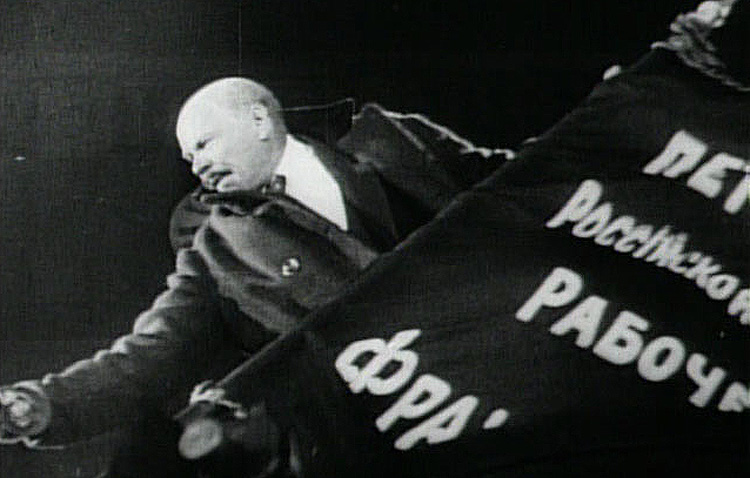
 |
The films of Soviet Russia of the 1920s revolutionized cinema. Their breakthroughs are still being studied today. In this class, we will study several of these ground-breaking films, and the theories behind them. Many of the Russian directors also wrote about the art of cinema. They were both theorists as well as artists. Since most of these Soviet films are products of written film theories, it is very important that you prepare by first reading what Donald Cook has to say in your textbook. Here are the reading assignments for Soviet Cinema: Dziga Vertov and the Kino Eye on pp 92-94; Lev Kuleshov and the Kuleshov Workshop on pp. 94-99; Sergei Eisenstein on pp.99-111.
|
| The Kuleshov Experiment |
| Watch "The Kuleshov Experiment/Effect" below. Also read about this experiment here. |
| Great director Alfred Hitchcock explains the Kuleshov Effect in his own way: |
The History of Cutting - The Soviet Theory of Montage from Filmmaker IQ |
| Sergei Eisenstein and The Battleship Potemkin (1925) |
 |
Watch and study The Battleship Potemkin (1925) directed by Sergei Eisenstein. There will be a quiz on this film on November 28, 2017. After viewing The Battleship Potemkin, answer the following questions: 1. Describe how Eisenstein adapted Karl Marx's social dialectical progression of thesis, antithesis, and synthesis into the world of film in order to formulate an editing style and a school of thought that now goes by the name of "Soviet Montage." 2. How is "Soviet Montage" evident in "The Odessa Steps" sequence? Write a well-developed essay in which you describe this scene in detail from the point of view of how it is a textbook example of "Soviet Montage." 3. Critic Roger Ebert writes that The Battleship Potemkin "has its greatest impact not by the smooth unrolling of images, but by their juxtaposition to one another." Use the plate-smashing scene as the basis of your essay. Do you agree, or disagree with Mr. Ebert's statement? Write a well-developed essay that supports your thesis. Download Battleship Potemkin Answer Sheet |
| This assignment is due on November 28, 2017. |
The Odessa Steps and its Descendants |
| October (1928) Directed by Sergei Eisenstein |

In class we will watch a scene from October (1928) directed by Sergei Eisenstein. After viewing a scene from October answer the following question: This sequence is a classic example of Eisenstein's "Intellectual Montage." Clearly it has more meaning in it, than what it shows, i.e., it's more than just about a man going up the stairs! In a well written essay describe the scene in detail (including intertitles), and then go on to explain the real meaning of this sequence. Again, give details that support your findings. Download October Answer Sheet before coming to class on November 30, 2017. This will be an in-class writing assignment. |